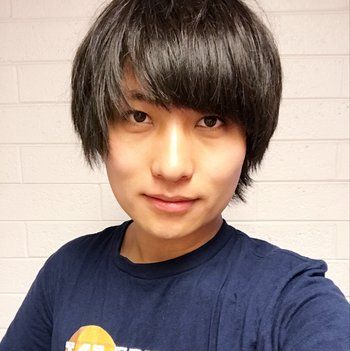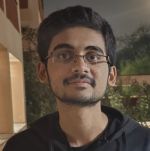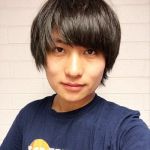ZTF Faces: Summer students and their mentors
 Abhiram Krishna (Indian Institute of Technology, Dharwad)
Abhiram Krishna (Indian Institute of Technology, Dharwad)
I am Abhiram Krishna, an upcoming senior at the Indian Institute of Technology (IIT) Dharwad, India.
I am pursuing a Bachelor of Technology in Engineering Physics. I am extremely passionate about physics
and have explored various branches of physics including Astronomy, Quantum Information, Experimental
Condensed Matter, Semiconductor Physics. I spend most of time stargazing using my small telescope. I
have also been founding member and secretary of the space data science club at IIT Dharwad. ISRO Mars
Orbiter Mission (MOM) captivated my interests in space science and astronomy.
 Yu-Jing Qin (Caltech)
Yu-Jing Qin (Caltech)
I’m Yu-Jing Qin, a postdoctoral researcher at Caltech working with the ZTF collaboration. My current focus is the
ZTF Bright Transient Survey, the largest spectroscopic census of distant explosions. Besides astronomy,
I enjoy classical music, opera, and photography. Becoming an astronomer was a childhood dream of mine,
and my move to the West Coast was inspired by the stories of Edwin Hubble and George Hale.
Automatic Classification and Anomaly Detection of Supernova Spectra in ZTF Bright Transient Survey

The ZTF Bright Transient Survey (BTS) represents a pioneering endeavor in systematically identifying and characterizing extragalactic transients. One of the primary missions is to acquire optical spectra to classify and study extragalactic transients, including supernovae and tidal disruption events. We develop an automatic supernovae classification tool using machine learning by designing a series of binary classifiers for different types of supernovae using ensemble classifiers, primarily the Random Forest Classifier and XGBoost Classifier.
Furthermore, due to the extensive collection of spectra from the survey and the community, there could be rare cosmic transients and uncommon events that can deepen our understanding of the evolution of stars and activities of supermassive black holes. We employ an unsupervised Isolation Forest algorithm and various dimensionality reduction techniques to identify these novel, unusual events. This approach allows for detecting significant anomalies, potentially revealing rare and extraordinary supernovae within the dataset.
 How do you pick a project to work on?
How do you pick a project to work on?
I prefer choosing projects which have novelty and needs the application of latest techniques.
I like exploring newer fields and horizons and like to work in
interdisciplinary field. These thoughts help me in choosing my projects.
 How do you formulate a project for a student?
How do you formulate a project for a student?
Primarily based on the student's expertise and research interests, and, of course, on what can realistically be
achieved in one summer.
 What is the number one quality you look at when you select a mentor to work with?
What is the number one quality you look at when you select a mentor to work with?
I value mentors who strike a balance between offering freedom to innovate and stepping in with insights when
needed, helping me grow both intellectually and professionally.
 What is the number one quality you look at when you select a student to work with?
What is the number one quality you look at when you select a student to work with?
Being enthusiastic about research, being a problem solver and critical thinker.
 Was there a specific moment during the summer research work that was particularly exciting?
How about challenging?
Was there a specific moment during the summer research work that was particularly exciting?
How about challenging?
The summer research work overall was an excellent experience. The most exciting part was observing
night at Palomar Observatory using DBSP on 200-inch Hale Telescope recording supernova spectrum.
As there is a huge diversity in supernova spectra designing algorithms for spectral classification
and anomaly detection the most challenging part was to design an algorithm to detect rare supernova
spectra.
 Was there a specific moment during the summer research work that was particularly exciting?
How about challenging?
Was there a specific moment during the summer research work that was particularly exciting?
How about challenging?
The moment when we identify some unusual supernova from the dataset using Abhiram’s new algorithm.
 What do you think is the most valuable thing you learned this summer?
What do you think is the most valuable thing you learned this summer?
The most valuable thing I learned was the ability to approach the problem creatively and explore new ideas for
solving problem.
 What do you think is the most valuable thing you learned this summer?
What do you think is the most valuable thing you learned this summer?
If we carefully combining machine learning algorithms, we can accomplish complex tasks such as
identifying unusual signatures in complex data with greater efficiency.
 In science, answering one question also results in asking oneself a set of new ones. What are
these for you at the end of this project?
In science, answering one question also results in asking oneself a set of new ones. What are
these for you at the end of this project?
At the end of this project, several new questions have emerged for me. I wonder if there are unexplored
connections between certain rare supernova types that could help us better understand their origins.
Another question is how the classification techniques we developed could be extended to other transient
astronomical phenomena.
 In science, answering one question also results in asking oneself a set of new ones. What are
these for you at the end of this project?
In science, answering one question also results in asking oneself a set of new ones. What are
these for you at the end of this project?
Can we apply the technique to other more uniform spectroscopic datasets, for example, those
from massively-multiplexed spectroscopic surveys?
 The universe never fails to surprise us, but did you manage to surprise yourself this summer?
If yes, how?
The universe never fails to surprise us, but did you manage to surprise yourself this summer?
If yes, how?
Yes, I did manage to surprise myself this summer. I discovered a newfound confidence in my ability to
approach complex problems. My work at Caltech rejuvenated my interests in astronomy and astrophysics.
My interactions with my supervisors and peers at Caltech significantly shaped my thinking, introducing
me to new perspectives and approaches in research. These experiences broadened my outlook on astronomical research.